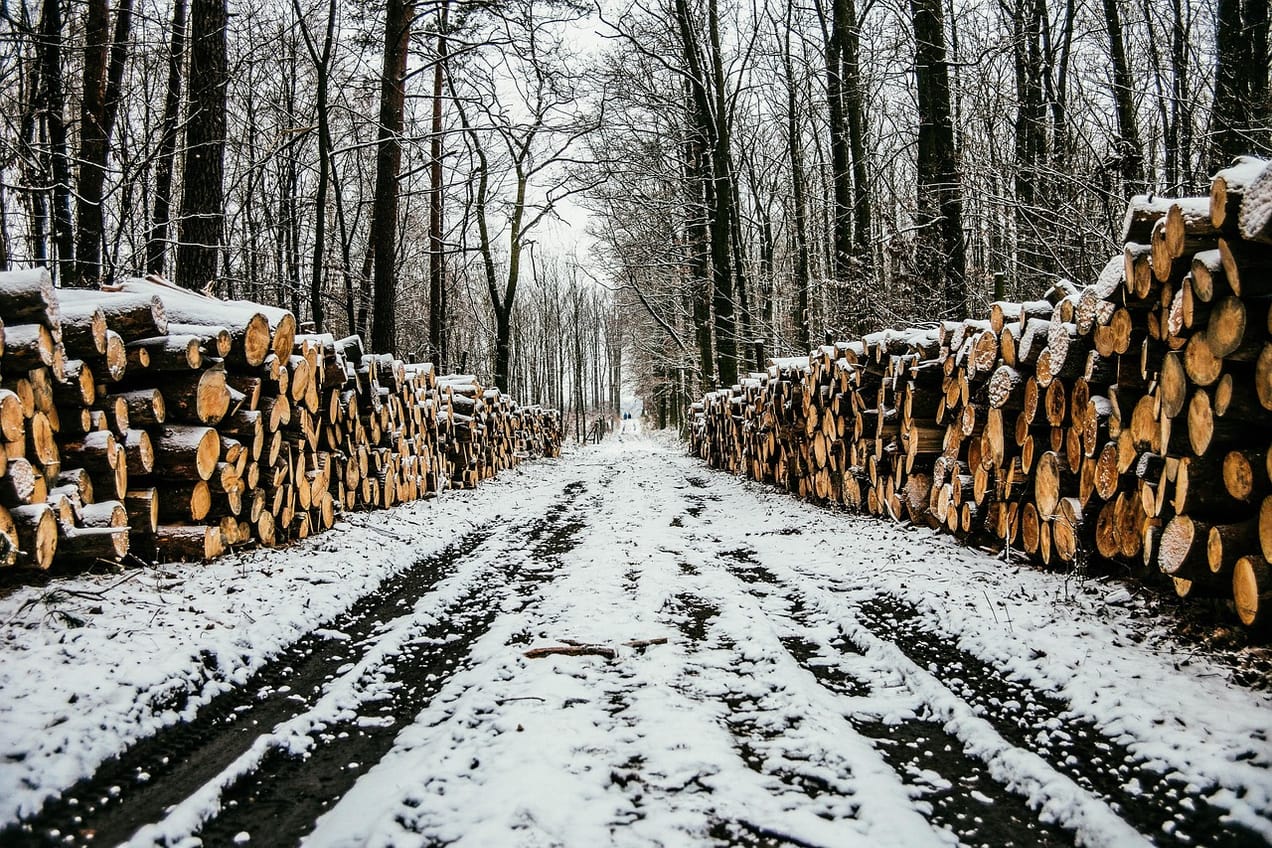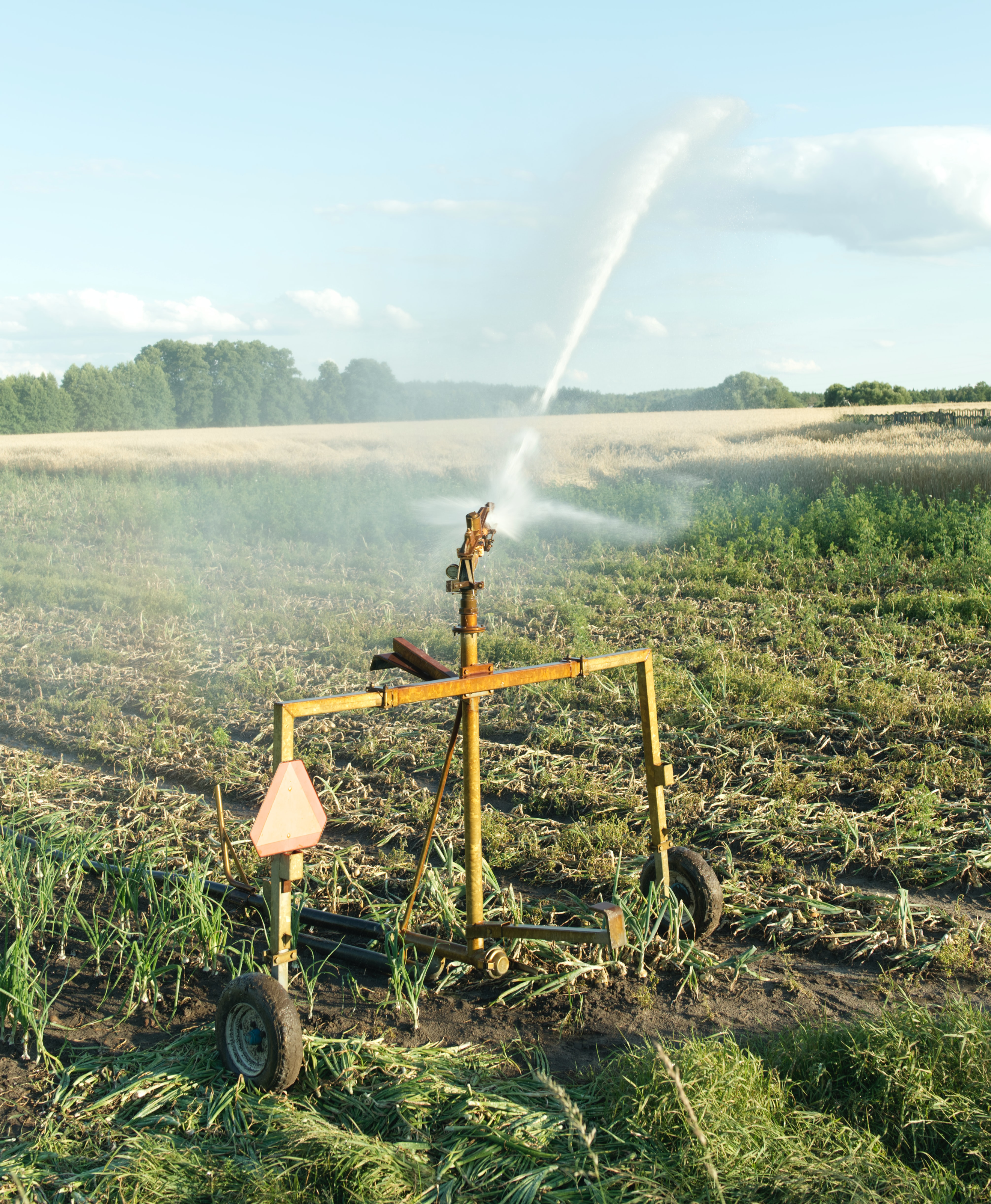
Water use in agriculture
Agriculture consumes almost three-quarters of freshwater withdrawal globally. But what parts of agriculture?
Summary: Agriculture is the biggest consumer of freshwater - in fact almost 3/4 of total freshwater withdrawal. Different food products consume different amounts of water, but there are some nuances to consider.
Why this is important: Understanding the resources consumed in producing the food we eat can help with both shifts in how we produce, but also what we choose to eat. These decisions, in turn, can have important impacts on biodiversity, climate change and our health.
The big theme: Water is the critical resource to sustain life on this planet. It is essential for our bodies and those of the other living species on the planet as well as being an important resource in industry. Its availability, especially in potable form, is a macro risk factor as well as being an opportunity for innovation that investors can drive.
Agriculture (and its sibling, aquaculture) sit at the intersection of a number of UN Sustainable Development Goals (UN SDGs). As one reads through the list of goals they are either directly relevant (for example goal 2: zero hunger or goal 3: good health and well-being) or have a causal relationship (for example, education improving with better nutrition and less pollution). Reforming agriculture is a big deal, in terms of greenhouse gas emissions, environmental impact, food security, rural society and water use. But it’s going to require massive social and economic change and disruption, to production methods, to supply chains and to employment. It’s not clear that the political will to change fast enough really exists, which could mean faster and more dramatic change needs to come in the future.

The details
How big a consumer of water is agriculture?
Agriculture is by far and away the biggest consumer of freshwater at almost 3/4 of total withdrawals. Industrial uses are the next biggest, using water for fabricating, processing, washing, diluting, cooling, or transporting a product. Water for domestic uses include drinking water and supply for public services, homes and commercial establishments.
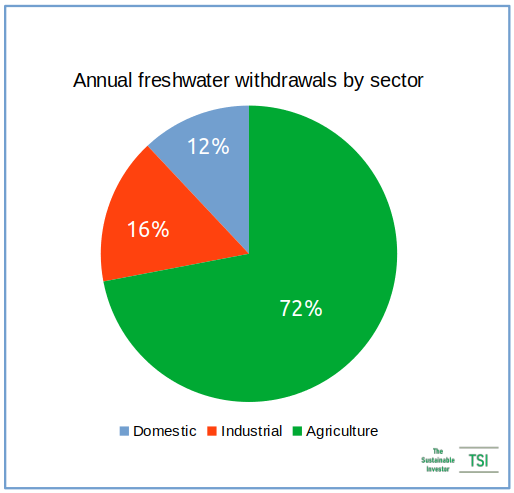
Agriculture and income levels
Agricultural use varies greatly by income levels which is a reflection of the relative importance of agriculture to countries with those income levels.
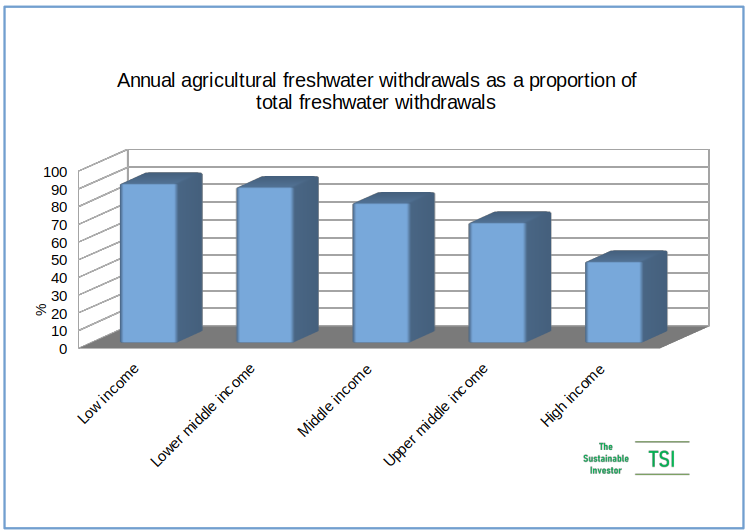
As such water stress can be particularly devastating in low income countries as both a food source and a source of income can be decimated, as we discussed in this Perspective 👇🏾

How much water do different foods need?
When looking at the amount of water that different foods need to grow, it is important to consider where that water comes from and what it is used for. Is it recoverable and can be used again through the water system or is it consumed or require treatment before reuse?
There are three broad categories of water (when talking about consumption and water footprint in agriculture):
- Green water: This is the water entering soils from precipitation (rain, snow etc).
- Blue water: This is surface and groundwater including lakes, rivers, aquifers and wetlands. It can be recharged by precipitation.
- Grey water: This is freshwater that carries the load of pollutants.
Important to note that regional variations in water consumption can be quite stark. For example in Vietnam rice consumes 638 m3 per ton of total freshwater compared with 2,874 m3 per ton in Pakistan.
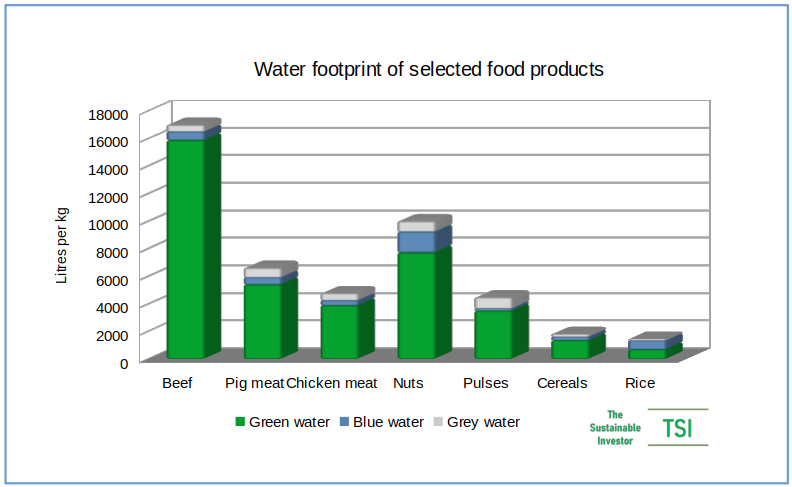
The above chart shows the water footprint by weight, by what about nutritional value? Let's look at calories and protein as examples:
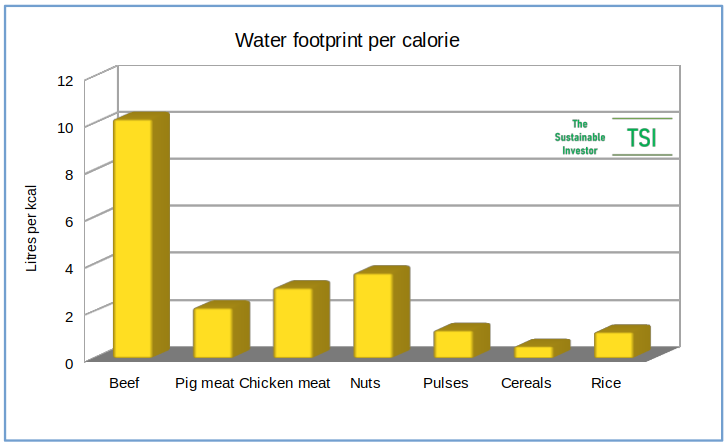
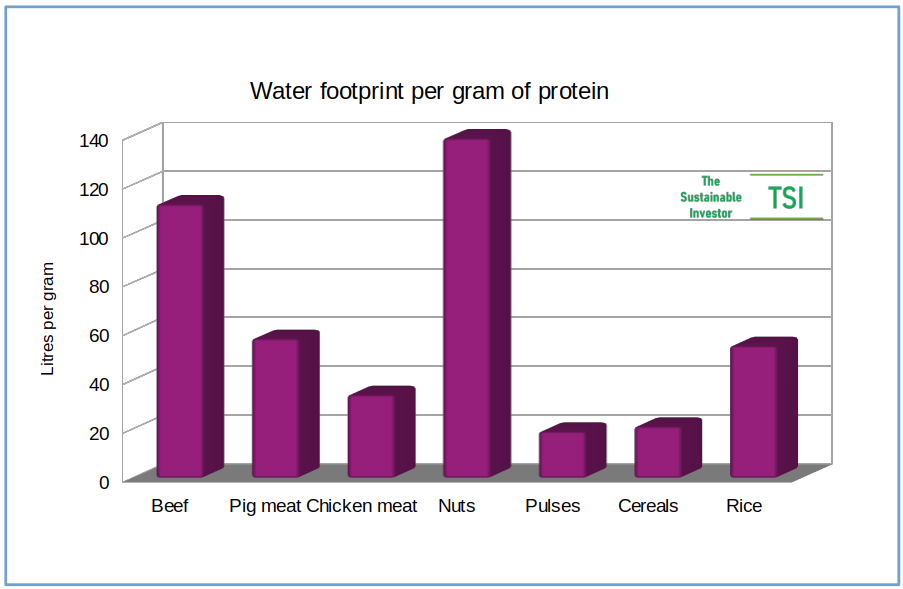
(Data sources: "A global assessment of the water footprint of Farm Animal Products" Mekonnen & Hoekstra, 2012; "The blue, green and grey waterfootprint of rice from production and consumption perspectives" 2010, Chapagain & Hoekstra; USDA)
Viewed from a calorific standpoint, the water footprint for animal products is generally larger than for crop products with beef as a standout. Focusing on protein, the water footprint for beef is six times larger than that of pulses for example.
What's the beef?
You can see from the chart that beef production has the biggest water footprint by quite some distance. However there are some nuances.
Almost 98% of beef production's total water footprint comes from their feed. Some studies estimate that the total water footprint of feed crops amounts to 20% of the water footprint of total crop production. That means that the majority of water use is green water.
A study by researchers in Finland found that replacing livestock and aquaculture feed that could be used for human consumption with food system by-products and residues could free up enough food to feed an additional one billion people! 👇🏾
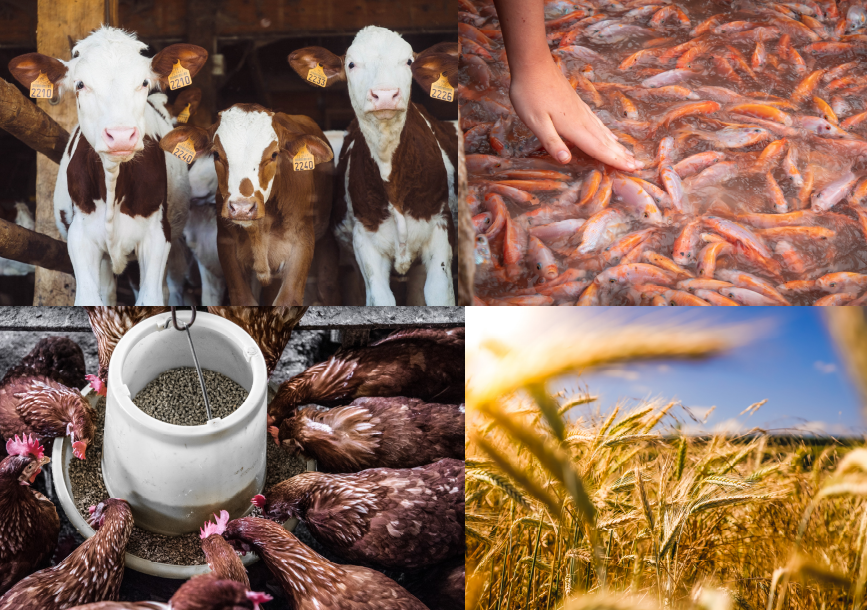
Could that also dramatically lower the water footprint too?
Within beef production there are geographical variations in terms of the types and amount of feed used and associated water footprints, but also differences between industrial beef production and open grazing.
Industrial beef production has ten times the combined blue and grey water footprints of grazing.
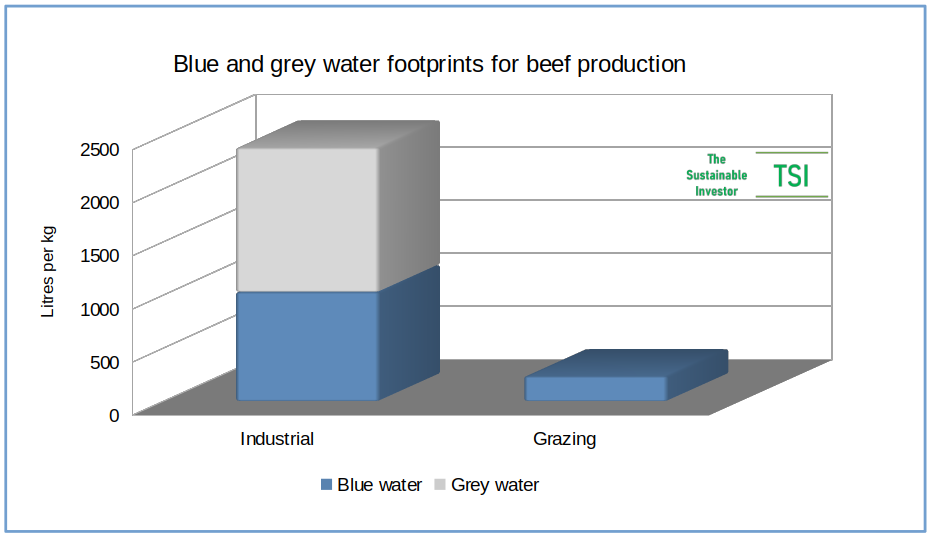
In future blogs we shall discuss differences between forms of agriculture from an overall environmental impact perspective as well as focus on potential water solutions more broadly from generating clean water to improving efficiency of use to reducing the burden on treatment plants.
Something a little more bespoke?
Get in touch if there is a particular topic you would like us to write on. Just for you.
Contact us
Please read: important legal stuff.

